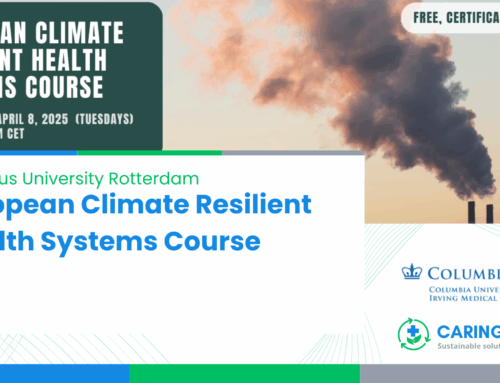Background
Healthcare systems across Europe significantly contribute to environmental degradation through high energy use, resource-intensive infrastructure, and waste production. At the same time, they face growing challenges from climate change, which exacerbates health inequalities and strains public health services. Traditional sustainability strategies in healthcare often address individual issues in isolation and lack a systemic approach that aligns environmental, social, and economic goals.
In this context, the CARING NATURE project has developed an innovative Healthcare Doughnut Framework, adapting the concept of Doughnut Economics by Kate Raworth. This model aims to support a transition toward environmentally sustainable, socially equitable, and economically viable healthcare systems.
Dr. Chiara Cadeddu and her team at Erasmus University Rotterdam developed this framework, by implementing a literature review, a validation process from experts and the gathering of inputs from the 50 members of the CARING NATURE Reference Stakeholder Group.
Outputs
The CARING NATURE Healthcare Doughnut is structures as follow:
- Inner Ring – Social Foundation: Encompasses essential conditions for health equity, access to care, and well-being.
- Outer Ring – Ecological Ceiling: Captures the environmental boundaries healthcare systems must respect (e.g., climate change, pollution, biodiversity loss).
- Safe and Just Space: The zone between the rings, where healthcare can thrive without harming people or the planet.
It contains a catalogue of 105 actionable measures, grouped into 11 domains, including:
- Direct impact domains: Buildings, Energy, Waste, Pharmaceuticals, WASH, Food, Transport, Supply Chain.
- Enabling domains: Public Health Initiatives, Staff & Community Engagement, Financing & Funding.
Why It Matters
This framework will guide the design of the Caring Nature Knowledge Sharing System and inform the green healthcare transformation across Europe, by :
- Providing a holistic model to evaluate and improve sustainability in healthcare.
- Integrates environmental limits with health equity goals, aligning healthcare actions with planetary boundaries.
- Enables system-level transformation by identifying specific, actionable strategies supported by validated evidence.
- Serves as a foundation for further tools like decision support systems and policy-making across the EU healthcare sector.
Learn more about this framework by watching the interview of Chiara Cadeddu.






